
Want to know what does a cavity look like? You are in the right place!
According to a recent report by CDC Oral Health, 1 in 4 adults suffer from untreated cavities. Even, it's estimated that 90% of adults have experienced at least one cavity in their lifetime. This concerning figure reflects a dual challenge: a lack of awareness about dental issues and a common fear of dental visits due to high costs. As a result, cavities often go unnoticed until they escalate into severe problems requiring immediate attention.
Understanding “What do cavities look like?” is crucial for early detection and timely intervention. By recognizing the signs, you can determine whether you need treatment.
So, What Does a Cavity Look Like?
Cavities form when leftover food remnants combine with bacteria in your mouth, becoming a sticky layer called plaque. If this plaque accumulates around your gumline, it triggers gingivitis, which is gum inflammation. It contributes to tooth decay and cavities, which further develop into a small hole in the gums.
A cavity can appear in various forms depending on its stage and location on the tooth. To know how do cavities look like, read further:
1️⃣ Small white spots on the tooth enamel are visible in the early stages of cavity development.
2️⃣ When there is significant decay, the white spot turns into a brown or black spot.
3️⃣ In cases of deeper damage, it could turn into a rough or pitted area on the tooth surface.
4️⃣ If it turns into a severe infection, large holes or pits appear in the tooth. Moreover, it may turn red or swollen due to infection or inflammation.
Can You See Cavities?
Absolutely!
Look out for these indicators to find out if you have a cavity.
➡️ Color
♦ White Spots: Early stages of tooth decay may present as white spots on the enamel.
It majorly signals demineralization before a cavity has formed.
♦ Brown or Black Spot: The most common visual sign of a cavity is a brown, black, or
darkened spot on the tooth's surface.
➡️ Surface Texture
The affected area may feel rough or have a noticeable indentation. This is due to the enamel being eroded by acids produced by bacteria.
➡️ Location
Cavities often occur on the chewing surfaces of molars, where food particles can get trapped. However, you may see cavities on the side of the tooth or near the gum line.
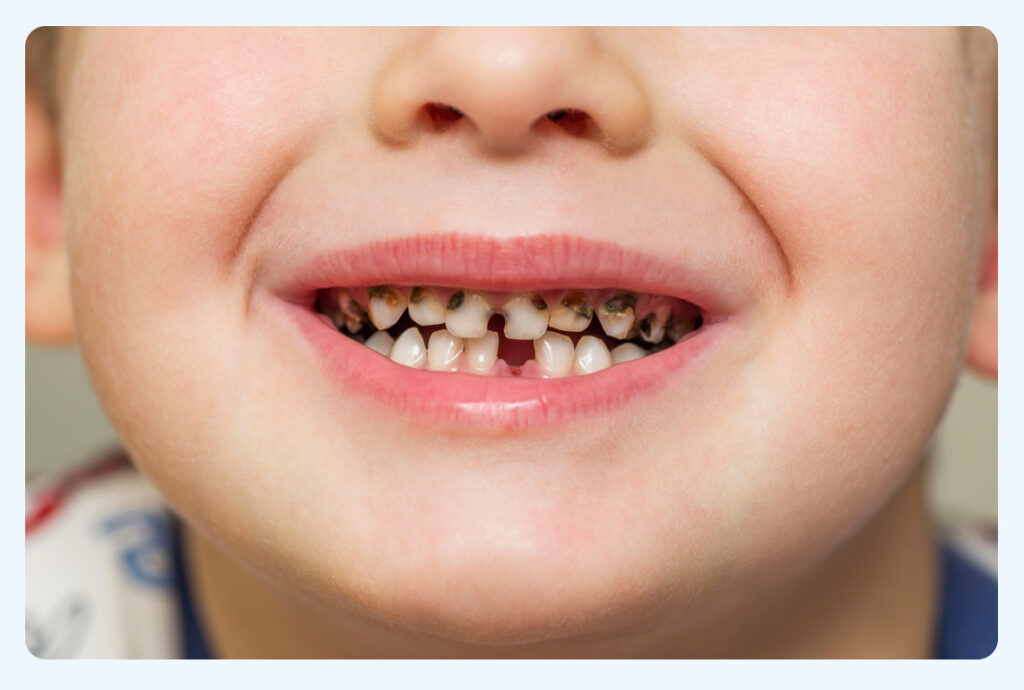
What Does a Cavity Look Like on a Molar
A cavity on a molar often appears as a small dark spot, pit, or hole on the tooth's surface. It may look brown or black and can be found in the grooves or between the teeth. As it worsens, the cavity can become larger and more noticeable, leading to pain or sensitivity.
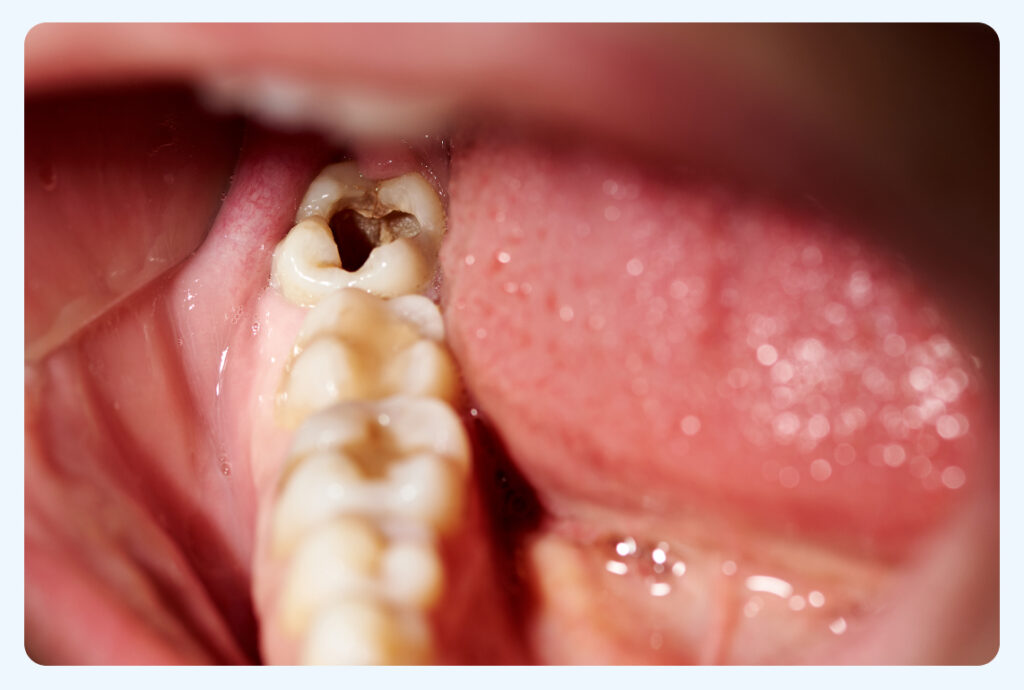
What Does a Cavity Feel Like
A cavity can lead to a variety of sensations and discomfort in the affected tooth. Even some people may say, “I can feel a hole in my tooth with my tongue,” which often indicates the presence of a more significant cavity.
Therefore, if you have a cavity, you might experience the following symptoms:
► Tooth Sensitivity
You might experience sharp pain when consuming hot or cold foods and beverages or even sweets. In fact, this sensitivity indicates that the cavity is affecting the tooth’s nerves.
► Toothache
"Do cavities hurt?"
Many people wonder about this, and the answer is a resounding yes. Cavities can cause a persistent, dull ache in the tooth, but it’s not always constant. You might also experience sharp, intermittent pain.
► Pressure Sensitivity
The pain can occur when pressure is applied to the tooth, especially, when you chew food. This pressure can irritate the damaged area, leading to increased sensitivity.
► Lingering Discomfort
The pain or sensitivity may linger for a while after eating or drinking. It mostly happens when your tooth is exposed to extreme temperatures or sugary substances.
How Long Does It Take for a Cavity To Form
Cavities can form at different paces based on a few key factors, like how well you care for your teeth, what you eat, and whether you use fluoride. Generally, cavities, either a pop cavity (caused by consuming too much sugar) or a gumline cavity, can start to develop within 6 months to 5 years. This process begins when the enamel starts to lose minerals. When food stays on your teeth, it mixes with bacteria and produces acids that can slowly wear away the enamel. Most importantly, if you don’t stop this by practicing good oral hygiene, like brushing and flossing regularly or getting professional cleanings, the enamel will continue to break.
How Cavities Grow Through Each Stage
1. Demineralization
This process creates white spots on the enamel, indicating the beginning of decay. Moreover, the cavity can be easily identifiable through routine checkups. The major signs are plaque or a sticky film of bacteria forming on teeth.
2. Enamel Decay
If demineralization continues, the enamel becomes more porous and weakens further. This is when a cavity begins to form. Additionally, the affected area may become discolored and might show signs of decay, such as brown or black spots.
Pictures of Teeth Without Enamel
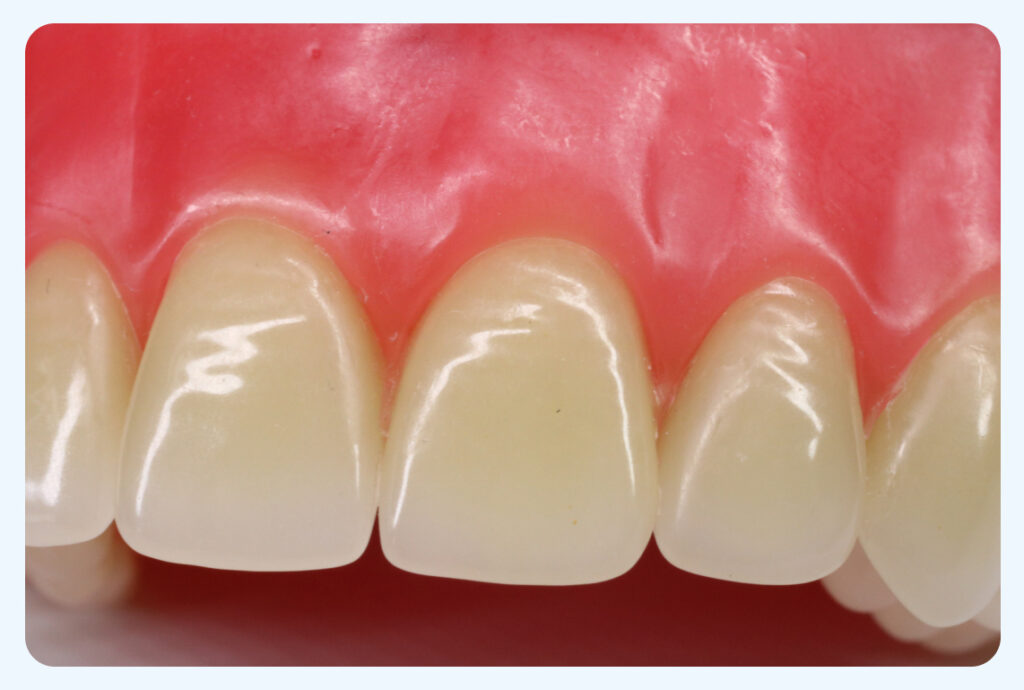
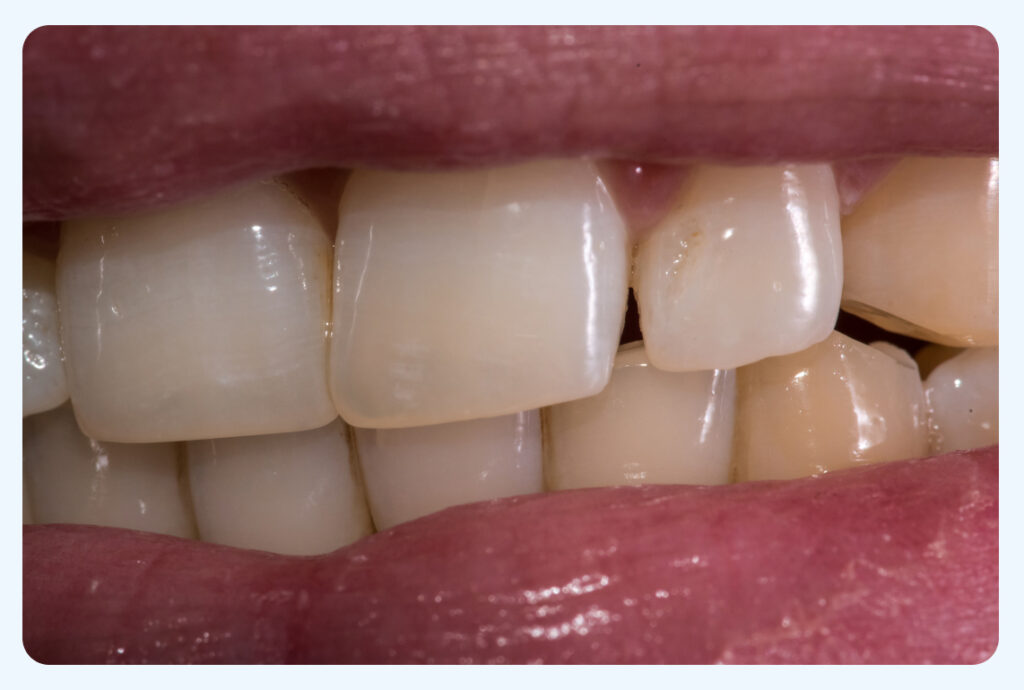
3. Dentin Decay
Once the enamel is damaged, the decay can reach the dentin. It is the layer beneath the enamel. At this stage, patients may start to experience sensitivity to hot, cold, or sweet foods, as the protective enamel layer is no longer intact.
4. Pulp Involvement
If the cavity is not treated, it can reach the pulp. As a result, it can lead to severe pain, infection, and inflammation, known as pulpitis. Affected individuals may require more extensive dental treatments, such as root canal therapy, to save the tooth.
5. Abscess Formation
If the decay continues unchecked, bacteria can infect the pulp and lead to the formation of an abscess (a pocket of pus at the tooth's root). This condition can cause intense pain, and swelling, and can cause cavities in between teeth.
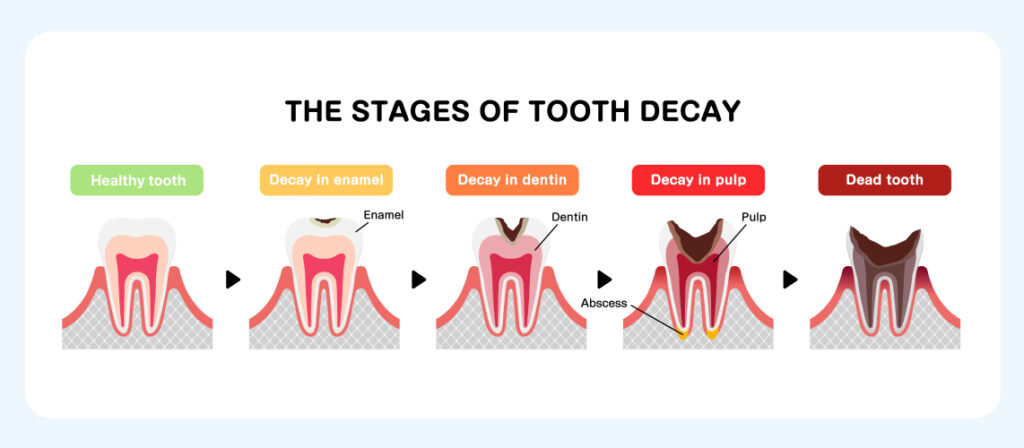
Can You Reverse Cavities?
Yes, stage 1 early cavity is possible to reverse.
As the saying goes, prevention is better than cure. Here are some effective methods to help you avoid cavities altogether.
- Brush your teeth twice daily using fluoride toothpaste. Don’t forget to floss every day to eliminate plaque and prevent further decay.
- Cut down on sugar, as bacteria in your mouth feed on it to produce acids that can erode tooth enamel.
- Prioritize a nutrient-dense diet full of vitamins and minerals to support healthy teeth and gums.
- Stay hydrated and consider chewing sugar-free gum to enhance saliva flow. It neutralizes acids in the mouth and delivers minerals to fortify your teeth.
- Schedule regular dental checkups to identify early signs of decay and address them promptly.
Nevertheless, if you notice a severe cavity on X-ray, indicating that it has gone beyond the early stages, what actions should you consider?
KEEP READING TO KNOW!
How Do You Get Rid of Cavities?
Cavities can sneak up on you before you even feel a thing, but regular dental checkups can help you catch them early. Undoubtedly, addressing cavities before they cause more problems can make all the difference. Still, if cavities have already occurred, these treatments can help you get rid of them.
Fluoride Treatments
These are professional dental procedures that protect your teeth from cavities and strengthen enamel. Fluoride treatment can be done through fluoride varnish, gel or foam, mouthwash, and supplements.
Fillings
Realistically speaking, dental fillings are very effective in repairing cavities. Additionally, they are crucial in restoring tooth function and putting a halt to further damage and discomfort. There are several types of fillings available, namely, gold fillings, silver amalgam, composite, porcelain, and glass Ionomer fillings.
Key Takeaway
What Does a Filling Look Like?
A filling typically appears as a smooth, shiny surface within the tooth, often matching the tooth's natural color if made from composite resin. It can also be metallic in color if made from amalgam, giving it a more noticeable appearance in the mouth.
Crowns
If you're dealing with moderate to severe cavities or a rotten tooth, a dental crown may be the best solution. This treatment addresses cavities that cannot be repaired with fillings alone. Typically, a dental crown is fitted following a root canal procedure to provide lasting support and strength to the tooth.
Root Canals
When cavities progress beyond the outer enamel and dentin layers, they can reach the tooth’s pulp, causing infection or inflammation. In such cases, a root canal becomes necessary to save the tooth and prevent further complications.
Tooth Extractions
When a tooth is extensively damaged and no treatment can restore it, extraction becomes necessary. It’s essential to prevent further damage to the surrounding teeth. This makes extraction a proactive measure for maintaining oral health.
Here’s a table that outlines the costs and advantages of various dental treatments for cavities.
| Treatment | Cost | Benefits |
| Fluoride Treatments | $20 to $50 | ► Enhances mineral absorption. ► Strengthens enamel.► Prevents & reverses cavities. |
| Fillings | $100 to $4,000 | ► Prevents further decay. ► Restores tooth function. ► Relieves pain and sensitivity. |
| Crowns | $1000 to $2,000 | ► Restores tooth strength. ► Prevents further damage. ► Improves functionality. ► Reduces sensitivity. ► Long-lasting solution. |
| Root Canal | ► Front teeth: $700 to $1,500 ► Premolars: $800 to $1,800 ► Molars: $850 to $2,000 | ► Saves the natural tooth. ► Effective is there is an infection in tooth pulp. ► Prevents further infection. ► Restores functionality. |
| Tooth Extractions | $140 to $450 per tooth | ► Prevents further dental issues. ► Relieves pain and discomfort. ► Improves oral hygiene. ► Promotes healthier gums. |
Now that you have a clearer understanding of what does a cavity look like, you can make informed decisions about whether you need dental treatment if you suspect you have cavities. However, the high costs associated with dental procedures often create significant obstacles for many individuals. According to a Dental Health Report, a staggering 40.3% of dental spending is out of pocket, largely due to factors such as inadequate insurance coverage, low reimbursement rates, and limited financial resources. This financial burden can discourage individuals from seeking the necessary care, leading to further complications down the line.
In such cases, Denefits financing solutions allow you to manage treatment costs without sacrificing your oral health.
Denefits Financing Solutions for Affordable Dental Care
This financing solution allows patients to cover their treatment costs through flexible payment plans. The best part is that many providers embrace Denefits to assist their patients in managing treatment costs. Simply speak to your dentist about using Denefits and they will help you set up payment plans, tailored to your budget. What’s more, Denefits doesn’t let low credit scores hold you back, thanks to its no-credit-check policy. In addition, if you find yourself in need of urgent dental care, Denefits approves you quickly.
The Final Thoughts
Having explored what does a cavity look like, you’re better equipped to recognize its symptoms and know when to seek help. If you notice any signs of decay, don’t hesitate to consult your dentist. Early detection and treatment are key to preventing further decay and avoiding more serious dental complications. Remember, regular dental visits are essential for preserving your oral health and addressing cavities before they become severe. If cost is a concern when considering treatment options, Denefits is here to help with flexible payment plans.



